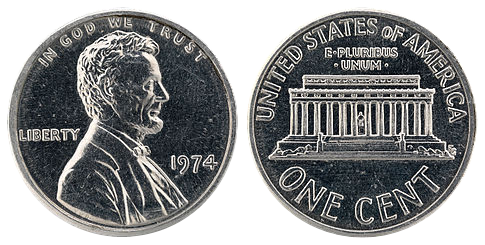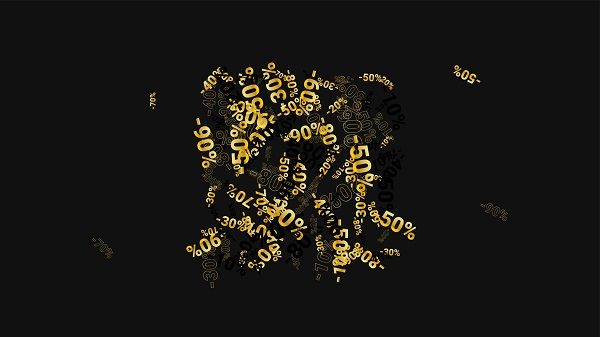The Fall of Cryptocurrency Shows the Value of What’s Real
Posted on — Leave a commentThe party has ended. The promise that cryptocurrency will change finance and perhaps even the structure of our economy has faded. Within 2018 alone, Bitcoin, the most popular cryptocurrency, has lost more than 70% of its value. This dramatic drop has encouraged many to ask if the very concept of cryptocurrency is doomed.

Other cryptocurrencies like Ripple, Ethereum, Litecoin, and EOS have all fallen by double digits, with EOS performing best with “just” a drop of 66% year-to-date. Those who speculated on the rise of these “coins” have nowhere to hide. In fact, 91 of the top 100 traded cryptocurrencies have fallen on a year-to-date basis, most in the double digits. Simply put: when cryptocurrencies fall, they fall hard.
This turmoil among major coin offerings should be taken as a warning as the broader equities market begins to experience its own volatility. Geopolitical angst, rising rates, and unrealistic expectations have all driven share prices down across industries as 2018 looks certain to end in negative territory.
This market downshift is believed by many to portend either extended volatility or muted returns in comparison to what investors have experienced over the last decade.
The time is now for long-term investors to strategize for increased uncertainty.
Research has shown that precious metals like gold have “low correlations with stock index returns.” This finding is especially important as cryptocurrency investors and equity investors alike discover that much of their early enthusiasm was baseless.
Downturns, however, over the long run are inevitable part of investing. What is important is not attempting to buy and sell at the right times. Instead, investors entering this new market should be aware of moves they can make today to offset a faltering equities market.
Data shows that in seven of the eight largest S&P 500 declines, gold had a strong positive performance. Moreover, in three of these instances gold increased in value by double digits. Consider that between early October of 2007, and early March of 2009 when the S&P 500 lost 56.80%, gold earned a return, over the same period, of 25.5%. When the market “corrects” gold is there to help investors seven times out of eight. The inverse relationship between a steep drop in the S&P 500 and a rise in gold has been present in the 19702, 80s, and at three times in the 2000s.
Some will blame recent equity market downturns on the recent interest rate hikes from the Fed. Whether or not this argument is sound, the fact is that gold also performs well during rate increases. Since 1970, gold has risen in value during most of the Fed increases. The increased value of gold during these periods is not strongly correlated to the Fed’s movements. But the data shows that the common notion that Fed rates hikes are bad for gold are misplaced. In fact, the historic correlation between gold prices and Fed hikes is just 28%.
Gold helps ease bumps in the road and we’re headed for a rocky ride.
Fed signals fewer rate hikes in 2019
Posted on — Leave a commentThe winds are changing.

The big news out of Wednesday’s Federal Reserve meeting?
Fewer interest rate hikes are expected in 2019.
Yes. That’s right.
The Fed is almost done raising interest rates. And, that is positive for gold prices.
On Wednesday, the Fed did nudge interest rates higher by 25 basis points to 2.25-2.50%, a widely expected move.
The surprise twist at today’s meeting were hints the Fed would only raise interest rates twice in 2019, not the previously expected three.
How did gold react? Gold Prices soared to a 5-month high on Wednesday, hitting $1,258.80 an ounce, ahead of the Fed meeting.
Gold rallied on Wednesday because day traders started pricing in expectations of the Fed’s shifting gears. Signs of potential weakness in the economy later in 2019, alongside political pressure to stop raising interest rates are gold-positive.
Immediately following the Fed meeting, gold prices weakened in the classic “Buy the Rumor, Sell the Fact” type of trading action, as day traders took quick profits on the Fed’s big news. But, that’s just a short-lived pullback.
Bottom line? Wednesday’s news is positive for gold.
Gold is heading higher in 2019. The economy is expected to slow more in 2019 than the Fed previously thought. One major Wall Street firm is already warning the Fed will cut interest rates 3 times in 2020 amid a quick downturn in the economy.
- A new daily rising trend is developing for gold.
- Gold is poised for a run to the $1,300-$1,325.
- Gold price dips are buying opportunities.
Wednesday afternoon’s gold price dip offers an excellent buying opportunity in the new uptrend that formed off the August low around $1,175.
After nearly 10 years of economic growth and stock market gains due to unprecedented fiscal stimulus, the wind is shifting. We are at a key turning point.
Don’t ignore the economic winds. If you haven’t fully diversified and protected your portfolio with tangible assets, act now.
3 Investing Tips for the New Year
Posted on — Leave a commentThe recent stock market collapse has shaken investor confidence. Looking at your retirement portfolio isn’t fun anymore. It’s downright nerve wracking to see how much your 401k balance has eroded just over the past month. Heading into 2019, we outline three investing tips for your consideration.

It’s Time To Play Defense
After 114 months of economic expansion in the U.S. (the second longest in U.S. history), investor’s need to brace for chance. Recent economic growth was boosted and extended in this cycle by the tax cuts signed into law late last year. Also, the government’s budget included new spending which helped propel the economy forward.
Looking ahead, these expensive fiscal boosts to an aging economic cycle will come with a hangover. That hangover is called rising government debt and deficit – and also mean there’s less in the fiscal punch bowl to stimulate the economy once the next recession hits.
If you haven’t pared back on some of your risk assets, like stocks, it’s time to take a look at your portfolio and play defense.
One of the best proven ways to protect your portfolio is diversification into gold. Buying and holding up to 15% of your portfolio in physical gold is a proven method to improve total portfolio performance during hard times. When stocks fall, the price of gold rises – usually significantly. Gold has been a store of wealth for centuries. It’s time now to protect a portion of your asset in gold. Stop watching your 401k balance go down. Owning gold can offset those losses.
Consider Diversification Into Rare Coins
If you have a long term time horizon, some of the most significant price appreciation in the tangible asset arena usually occurs in the rare coin sector. The key to success is to purchase the highest quality coins you can afford. Just like in real estate where the mantra is location, location, location. In rare coin investing, its rarity, rarity, rarity. When you combine quality, with rarity the outcome can be quite financially rewarding.
Time for Your Quarterly Portfolio Review and Rebalancing
Once a quarter, or at least once a year, it is smart to review your overall portfolio. Here’s some items to analyze your assets.
- How much are you saving each month? Is it enough to reach your long-term financial goals?
- How much debt do you have – and what kind of debt is it? Financial pros say there are 2 kinds of debt – “good” debt – like mortgages, student loans or perhaps even business loans. These types of debt allow you to potentially build wealth over time through home ownership, or an educational degree that can open the door to higher lifetime income, or a business that could take off and allow you to be your own boss. Then, there’s “bad” debt, typically considered to be high interest credit card debt. If you are carrying high interest debt, it’s time to make a plan to pay that down in 2019.
- How are your portfolio assets diversified? There is a typical rule of thumb to take your age, minus it from 100 and that is the amount of money that you may want to invest in the stock market. The remainder should be invested in safe assets, like physical gold, or a mix of gold and fixed income bond investments. So, if you are 50, – you may be okay investing up to 50% of your portfolio in the stock market. The rest? Make sure you diversify into other assets like physical gold that will act to stabilize and improve portfolio performance over time.
Make 2019 your best financial year ever! Follow our three investing tips and get started today.
Read More
5 Reasons Gold Can Rally In 2019
Barron’s Cover Story: Why Gold Should Be Part of Your Portfolio
1973-1974 Aluminum Lincoln Penny
Posted on — 29 CommentsHow do you run a successful business? You make sure that costs don’t exceed revenues. However, in a 2014 biennial report to Congress, the U.S. Mint explained that it takes 8.04 cents to make a nickel and 1.66 cents to make a penny. This imbalance between manufacturing costs and face value is a problem.

This challenge is not new. In 1973 the U.S. Mint had the same problem. They decided to explore solutions. The prevailing idea was to make pennies from aluminum. Specifically, they intended to make them from an alloy of aluminum and trace metals. This approach would replace the copper-zinc composition in the traditional one-cent coin.
Rising copper costs made the traditional 1973 penny nearly equal in cost to its face value. This brought the topic of seigniorage into the fold. Seigniorage is a word used to describe the difference between the face value of a piece of currency and the cost to manufacture and distribute the money. To avoid a model in which costs exceed face value, the U.S. Mint decided on an alloy consisting of 96% aluminum. Aluminum was less expensive, more durable, and resistant to tarnishing. Additionally, aluminum takes less of a toll on the die used to mint coins which also brought manufacturing costs down.
The U.S. Mint went forward with their plan. They minted more than 1.5 million new aluminum Lincoln pennies in 1973 for intended release in 1974. Opposition to the plan, however, was immediate. Leadership in the copper industry rebuked efforts to abandoned the metal. Moreover, those in the vending machine industry became vocal about their concerns over the ability of machines to function with aluminum coins. There was an additional problem to all of this that no one foresaw: radiodensity.
Radiodensity is the inability of kinds of electromagnetic radiation to pass through a material. That is, pediatric radiologists cited the aluminum coins as a risk because they would be difficult to locate in an X-ray scan. An aluminum coin might be undetectable if a child ingested one. The coin might appear indistinguishable from human tissue on the images.
In time, the cost of copper declined. This, coupled with the growing voice of aluminum detractors left the initiative dead. The U.S. Mint recalled the aluminum coins. However, a small portioned were never returned, probably totalling 12 to 14 coins. These rare 1973 and 1974 aluminum pennies have remained hidden and unsold, therefore their value remains obscure.
However, in early 2014 a San Diego resident claimed to own a 1974-D aluminum coin. The “D” signifies that it was minted in Denver. The owner’s father was once a deputy superintendent of the Denver Mint. Some initial estimates put the value of the piece at $250,000 with some suggesting that the value could reach as high as $2 million.
Later that year PCGS certified the coin as authentic. The owner planned to auction the piece. At the same time the U.S. Mint requested that the owner return the coin. The issue went before a judge who “it is plausible that a Mint official, with proper authority and in an authorized manner, allowed Harry Lawrence to keep the 1974-D aluminum cent.”
Despite the ruling, the owner returned the coin to the U.S. Mint and the 1974 aluminum Lincoln penny remains a footnote in the history of the U.S. Mint.
5 Reasons Gold Can Rally In 2019
Posted on — Leave a commentThe gold market surged higher last week, hitting its highest level since mid-July.
Is this the start of a new rally phase in gold? The reasons to be bullish on gold are stacking up fast. Here are five:

- Global gold production growth has declined in recent years
Gold output in key producing countries, such as Australia and Peru, is set to slump to generational lows, according to S&P’s Gold Pipeline report. This is basic economics; less supply and growing demand will lead to higher prices.
Looking ahead, S&P forecasts a 9% fall in gold production for Australia in 2020, and expects the country’s production to reach a generational low of 6.8 million ounces by 2022. That is a 33% drop in only three years. Peruvian production is also expected to decline the most by 2022 — by a significant 1.9 million ounces. Notably, no new gold mines have begun production in the country since the start of 2017, according to mining.com.
- Emerging market consumer demand
China and India comprise over half the consumer demand for physical gold. Looking into 2019, the World Gold Council forecasts solid physical gold buying from these consumers bolstered by good economic growth in these countries.
- Technology demand for gold continues to grow
Gold is the preferred metal for a variety of electronics applications. Gold, for example, is used in “contacts” on semi-conductors which enable your smart phone to be smart. Copper and silver are also conductive metals and have been used as replacements, but both of those surfaces oxidize. Gold does not. Smart phones become more advanced with every new generation. Every new release involves new complexity, including facial recognition, wireless charging, and infrared sensors. All these tasks require advanced semiconductors. This means that, despite the costs, manufacturers are turning to gold for both bonding wire and contacts to ensure they work properly.
- Stock market volatility
The stock market volatility we witnessed last month is expected to heighten as we move into 2019 amid concerns over the aging economic cycle. Gold outperforms other asset classes when hard times come, and typically rises when paper assets like stocks crash.
- The U.S. dollar
Typically, gold and the U.S. dollar trade in an inverse relationship. That means when the dollar goes up, gold goes down and vice versa. Heading into 2019, expectations are for a weaker U.S. dollar, which is gold bullish.
Read More
How Rising Interest Rates Impact Your Wallet
2 Reasons This Is A Once In A Generation Opportunity To Buy Gold
Robbing Peter to Pay Paul, Then Robbing Paul
Posted on — Leave a commentEver whistled a tune? If so, then congratulations, you’ve committed to something for a longer period than the average hold time for a stock investment.

“Take any stock in the United States. The average time in which you hold a stock is – it’s gone up from 20 seconds to 22 seconds in the last year,” explains Michael Hudson, a former Wall Street economist at Chase Manhattan Bank.
Buy-and-hold might be a winning strategy, but for most, it’s not the one favored. Instead, investors move their money from one place to the next like robbing Peter to pay Paul, then robbing Paul. Each move incurs fees, and often losses.
This life-sized game of hot potato isn’t limited to just equities. Hudson continues, “The average foreign currency investment lasts – it’s up now to 30 seconds, up from 28 seconds last month.”
We see a trend towards brevity elsewhere. For example, the “average job tenure steadily declined, from 9.2 years in 1983 to 8.6 years in 1998,” according to research.
Much of the declining holding period for stocks is explained by high-frequency trading (HFT) which accounts for 70 percent of all equities trading. Moreover, “fundamental discretionary traders” – people who logon and make a trade like an ordinary human – only account for about 10 percent of all trades according to research from JPMorgan. Simply put, the wild swings seen in recent market activity has more to do with machine than man.
But the fact remains: man made those machines. Therefore, their high-frequency trades reflect our incessant need to change our minds, often at our peril.
This “flash dance” is the inherent problem with equities; even the most stalwart buy-and-hold investors suffer at the hands of faceless machines.
Is an investment in gold any different?
The answer is yes. Gold is, in fact, different. Researcher Joerg Picard wanted to understand what trades are most directly responsible for steering gold’s price. He examined the market and learned that ETF gold trades, which can be traded as easily as HFT equities, “do not contribute much to price discovery.” This finding illustrates why gold is a stable investment. It’s not subject to the violent convulsions of the HFT world that have come to dominate the markets.
Curious investors can take a look at the CBOE Gold Volatility Index (GVZ) over any period and see how rarely the metal gets spooked. However, looking at the same chart for equities (VIX) often called the “Fear Index” presents an entirely different picture. The bottom line: the equities market, as we’re seeing today, is highly emotional. Gold, however, enjoys more stability as if its weight is keeping it secured to the ground.
Meanwhile, the wild ride for equities will continue. As the global head of quantitative and derivatives research at JPMorgan remarked, “big data strategies are increasingly challenging traditional fundamental investing and will be a catalyst for changes in the years to come.”
When the Stock Market Starts Waving a Knife
Posted on — Leave a commentThe stock market is teaching us that when things are good, they’re great. And when things are bad, they’re awful. Simply put: volatility is back.

Many of the largest investment fund managers agree that the rocky ride has a long way to go. As recently as last week Gerry O’Reilly, a Vanguard portfolio manager who runs the largest equity fund in the world stated that he expects volatility to continue.
Today’s volatility comes from investors becoming increasingly cautious. For years, investors have made full commitments to the equities market. Expectations of late, however, have tempered. Moreover, as the Fed raises rates other fixed income investments become more attractive. As a result, strategic, long-term investors are counterbalancing the volatility with gold.
“Historically gold has outperformed equities by an even larger magnitude when volatility is rising from an already elevated level,” explained CFA Russ Koesterich at BlackRock.
Koesterich goes on to explain the research behind this statement. “Looking at monthly Bloomberg data from 1994 to the present, changes in the VIX Index, a measure of U.S. equity volatility, explain nearly 20% of the variation in the relative return between gold and the S&P 500 Index. In months when volatility rose, gold outperformed the S&P 500 price return by roughly 2% on average.” The VIX, a popular measure of volatility in the equities market, is sometimes appropriately called the “fear index.”
His research showed that in periods where the VIX rose above 20 and increased further “gold outperformed by an average of nearly 5%, beating the S&P 500 roughly 75% of the time.” Today, the VIX stands at 18.07 with many expecting an increase as experts work to detangle recent Fed remarks and the future of trade deals comes into focus.
The problem for most investors is that the power of gold as a steading force is not seen until it’s too late to make the investment. In other words, to benefit from gold’s unique characteristics in a portfolio, an investor must commit before the VIX rises. Unfortunately, even the most foresighted investors fail to appreciate the value of proactive measures. They ignore the art and science of asset allocation in which an investor balances risk and reward through exposure to a variety of assets like stocks, bonds and precious metals.
Gold is important when strategizing for asset allocation because historically it has a lower correlation to equities than other investments like REITs, private equity, commodities, and hedge funds. Research shows that during periods of turmoil gold has risen as global equities dropped. This phenomenon played out during the Long-Term Capital Management crisis, the September 11th terrorist attacks, the 2008 Global Financial Crisis, and especially Brexit during which gold climbed 9.8% and global equities fell 1.2%.
We’ve seen volatility start, but we haven’t seen it all. There is plenty of reason to believe volatility will not only continue but intensify. The time to counter the market swells is now when gold has the greatest potential to protect long-term wealth.
The Rogue Charm of the 1913 Liberty Head Nickel
Posted on — Leave a comment1913 Liberty Head Nickels are so rare that even the US mint doesn’t know where it came from. They never authorized the piece. Despite this fact, a few of these coveted coins exist. In 2010 one sold for $3.7 million. The question remains, where did this mysterious coin come from?

Between 1883 and 1912 the US Mint issued the Liberty Head Nickel. Eventually, the mint decided on a new design, the Indian Head Nickel. They were to be the first official nickels of 1913. As a result, the official records of the US mint show no indication of any 1913 Liberty Head Nickels.
Then came Samuel Brown.
He had five 1913 Liberty Head Nickels in his possession. No one knew how he found them. Then, some started looking into his past.
They learned that in 1913 Brown was an employee of the US Mint. His position gave him access to the minting process. Many concluded he struck these unauthorized pieces. He may have worked with others at the mint to accomplish this, however, details are unclear.
Historians note that rogue minting has happened before. There are 15 known 1804 silver dollars all of which were struck in the 1830s or after.
In 1924 Brown sold all five nickels, the finest of which is known as the Eliasberg specimen. As a result, this particular piece has been an object of desire for wealthy collectors. The Eliasberg specimen has passed from one person to the next fetching more money with every sale. The most recent sale, occurring in 2007, commanded $5 million for the single coin.
Despite this enormous sum, the Olsen specimen is the most famous of the five. King Farouk of Egypt once owned this piece. As with the Eliasberg specimen, the price has soared with each transaction. In 2004 it sold for $3 million.
Another piece, the Walton specimen sat for 40 years in a closet. The coin was returned to the collector’s family after the owner died in a car crash. He was on route to a coin show and was prepared to exhibit the rare piece. After officials sorted through the wreckage, which consisted of more than $250,000 in rare coins, they incorrectly determined that the 1913 Liberty Head Nickel was not genuine. For this reason, the family put it in a box in a closet and forgot about it. Later, the family learned of a coin show exhibiting the other four pieces. They also learned of a well-publicized effort to find the long lost fifth piece.
They dug through the closet and brought the coin to the show. Experts examined the piece and determined that it was real. They appraised the coin at $2.5 million, but it sold at auction for more than $3 million.
The remaining two coins, the Norweb and the McDermott specimens, have less storied histories because both have long been in the possession of museums.
Today, the coins are a reminder of how much we’ve come to value the charm of a rogue US mint worker with a bit of extra time on his hands.
Remember the Alamo!
Posted on — Leave a commentThey wrote the Texas Declaration of Independence overnight.


The Texas delegates had to work quickly because Fort Alamo in San Antonio was under siege.
Mexican General Antonio Lopez de Santa Anna led a Mexican force numbering in the thousands and surrounded Fort Alamo.
Inside the fort, although vastly outnumbered, 200 defenders bravely stood their ground.
Led by James Bowie and William Travis and legendary frontiersman Davy Crockett, the Texan soldiers held their ground courageously for 13 days before the Mexican invaders overpowered the Texans conquered the fort.
Remember the Alamo!
Just a few months later in April, 1836, Sam Houston and about 800 Texans defeated Santa Anna’s Mexican massive force – almost twice their size – 1,500 men at San Jacinto while shouting “Remember the Alamo!” as they attacked.
The Texan’s victory confirmed Texan independence and General Santa Anna, was taken who prisoner ultimately agreed to terms with Houston which finally ended the war.
For Texans, the Battle of the Alamo became a lasting symbol of their fearless resistance to oppression and their mission to gain independence.
Sixty six men signed the Texas Declaration of Independence from Mexico on March 2, 1836.
One hundred years later, the Texas Centennial Half Dollar 1935-D was struck in commemoration of the 100th anniversary of that pivotal event in Texas history.
Honoring the significance of this anniversary, Congress approved the first commemorative coin legislation since 1928, which allowed for the mintage of up to 1,500,000 souvenir half dollars to be created as part of the centennial celebration.
The Lone Star state boasts a rich and exciting history, which includes the 1836 creation of the Republic of Texas.
In total, six flags have flown over the state of Texas. That includes flags from Spain, France, Mexico, the Republic of Texas, the United States and the Confederacy. Notably, this inspired the name of the Six Flags amusement park, which was founded in Texas in 1961.
Sculptor Pompeo Coppini designed the commemorative coin: Texas Centennial Half Dollar.
Coin Description
Obverse: An Eagle sits on a branch in front of a five-pointed star, the symbol of Texas. The word: UNITED – STATES – OF – AMERICA circle the periphery of the coin. At the bottom the words: HALF DOLLAR, IN GOD WE TRUST, and E PLURIBUS UNUM round out the stunning design.
Reverse: This side of the corn boasts one of the most intricate designs ever displayed on a commemorative coin. The reverse features the goddess Victory, kneeling with an olive branch in her right hand. Her left hand rests Alamo. The word LIBERTY sits on top on a scroll, behind which are six flags. Below Victory’s wingtips the likeness of Texas war heroes Sam Houston and Stephen Austin are seen. THE TEXAS INDEPENDENCE CENTENNIAL and REMEMBER THE ALAMO circle the coin.
What is “Tail Risk” and Why Does It Matter?
Posted on — Leave a commentRecently, you’ve probably heard people utter that we are living in “strange times.”

They’re right.
Last year there were only 8 days in which the S&P 500 experienced a movement of more than 1%. This year the picture is different. The S&P 500 has seen 48 days in which the index moved more than 1%. Moreover, last month the index dropped almost 7%. Volatility is back and so are discussions of something called “tail risk.”
Tail risk is defined as “a form of portfolio risk that arises when the possibility that an investment will move more than three standard deviations from the mean is greater than what is shown by a normal distribution.”
Translation: sometimes things go wrong.
In other words, investors can expect, with a reasonable degree of confidence, that future outcomes will fall into a range of expected outcomes. The tail risk is the risk that future outcomes could fall far outside this norm. Tail risk is that awful outcome that you’re almost certain will not happen. The keyword: “almost.”
When tail risk becomes reality, the event becomes a part of history. Black Monday – when the Dow Jones Industrial Average fell more than 22% in a day – exemplifies tail risk. The Long-Term Capital Management crisis is another example of tail risk lashing the markets. Long-Term Capital Management (LTCM) was a hedge fund which saw its equity of 2.3 billion plummet to just $400 million in under 25 days. In the end the Federal Reserve Bank of New York had no choice but to offer a bailout of $3.625 billion. The most famous tail risk in recent memory was the 2007-2008 global financial crisis.
Today, we are seeing volatility flood back into the market. Daily, unexpected upheavals have left many investors wondering if we are sliding down the slope into tail risk territory. If so, they want to be prepared. As a result, some are looking to gold as a solution.
As one study found, “even relatively small allocations to gold, ranging between 2.5% and 9.0%, help reduce the weekly 1% and 2.5% AaR [value at Risk] of a portfolio by between 0.1% and 15.5% based on data from December 1987 to July 2010.” In fact, this same research concluded that portfolios holding gold outperformed those that did not in 75% of cases characterized by dramatic market drops.
The reason: gold often exhibits less volatility on negative returns than on positive returns. When things go bad in the equities market gold tends to hold its own better than the S&P 500. This finding doesn’t suggest that investors should abandon their equity holdings. Instead, it is a reminder that even a small gold holding can provide a stabilizing effect. For example, a portfolio consisting of just 8.5% gold between October 2007, and March 2009, “was able to reduce the total loss in the portfolio by almost 5% relative to an equivalent portfolio without gold,” according to the same study cited above.
Consider gold as your center of gravity as volatility and uncertainty push us further into these strange times.








